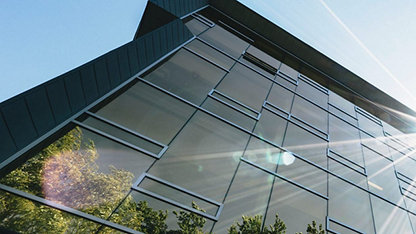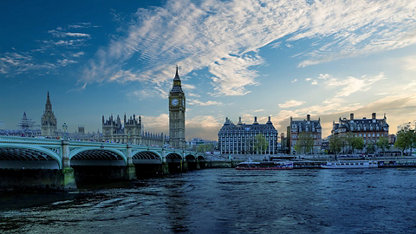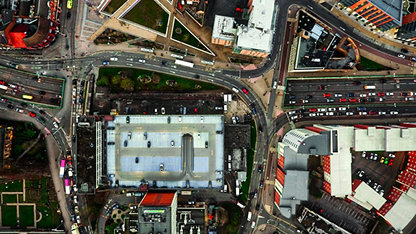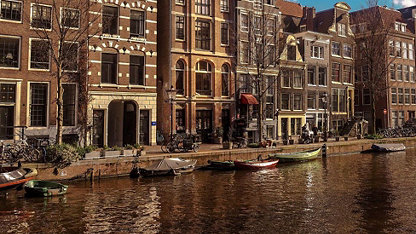RICS COP28 Case Study
Introduction
At Cushman & Wakefield, we prioritise the need to protect and promote sustainable value. Our sustainability strategy commits to tangible sustainability goals across the following three focus areas:
- we drive net zero,
- we accelerate progress, and
- we create positive places.
We recognise that the services we deliver for our clients directly impact the world, which is why we strive to make sustainability core to everything we do.
When RICS approached us to deliver their members space relocation project at 55 Colmore Row, Birmingham, sharing their own commitment to seek ways to reduce the carbon footprint, we were delighted to assist and provide expert insight to equip other professionals to embed sustainability in their future projects. Catherine Thompson MRICS is an Associate Building Surveyor within the Project and Development Services Team at Cushman & Wakefield, Birmingham. In 2022, Catherine was appointed to administer this project with a focus on minimising embodied carbon.
Challenges
With remote working increasing following the pandemic, RICS decided to reduce the capacity of its Birmingham office at 55 Colmore Row and relocate its members area from the ground to the fifth floor. The aim was to give members an improved drop-in workspace while carefully considering the embodied carbon emissions from the work.
The new fifth-floor member area was approximately half the size of the floor vacated, which inevitably meant that some of the fit out on the ground floor would be surplus to requirements. Our main challenge on this project was to seek ways to reuse and recycle to minimise the carbon footprint.
Solutions
Diverting waste from landfill was one of the principal drivers for the project, and a particular focus was given at the outset to retaining, reusing and donating as much of the existing fit-out and equipment as possible.
The space reused the furniture and partitioning from the ground floor, as well as retaining the meeting booths and quiet pods that were popular with members. The new member area includes two large conference rooms, incorporating a moveable partition that was also repurposed from the ground floor. Two six-person meeting rooms with reused glazed frontages overlook the Birmingham skyline to the rear, while a tea-point facility incorporates repurposed storage, shelving, waste bins, cupboards and a workbench.
The space has also relocated or repurposed:
- carpets
- feature wall panelling
- internal doors
- light fittings, including Barrisol lighting around planters
- plants and planters
- seating, tables and AV equipment in three meeting booths, each with a four-person capacity
- four quiet booths for individuals
- two workstations for up to six people
- one boomerang-shaped feature seating area with inset light fittings
- coat cupboards
- AV equipment
Items that could not be reused in the fit-out were audited at the outset of the project and careful consideration given to their reuse or repurposing off-site, including any transportation that would be needed, the distance they would be taken and the potential benefit to others. RICS was able to use some of the furniture in their other UK offices, while items that could not be repurposed internally – including a commercial kitchen installation – were donated to charitable organisations.
In addition to waste diversion, to ensure the project did not have a negative impact on the buildings energy performance certificate (EPC) rating, Cushman & Wakefield were engaged to calculate a revised EPC rating using updated methodology to comply with current Building Regulations.
Cushman & Wakefield were also engaged to undertake a life cycle assessment (LCA) following the process set out in RICS' Whole life carbon assessment for the built environment. This document outlines the strategy, scope and requirements for such assessments and measuring embodied carbon. All materials installed and disposed of were monitored and reported to Cushman & Wakefield's sustainability team as part of the LCA. One-click LCA software, verified by the Building Research Establishment, was used to carry out the assessment of the embodied carbon emissions.
Outcomes
By donating unwanted furniture and equipment and recycling items that could not be reused, a total of 53.93 tonnes of waste was diverted from landfill.
The revised EPC rating advised that the building already had efficient building management systems installed and a well-performing fabric. The assessment carried out using the previous methodology under the old Approved Document L in February 2017 gave an EPC rating of B(27) covering all floors of 55 Colmore Row. The new baseline EPC rating for the fifth-floor refurbishment under the revised methodology, calculated using government-approved IES Virtual Environment 2022 software for dynamic simulation modelling, was B(39). The EPC analysis after the relocation using the same software showed that the new layout slightly improved the floor's EPC rating to B(37).
The LCA found that the embodied carbon values for the fifth-floor relocation were around 40% less than average. This was achieved not only by reusing fixtures and fittings but also procuring most of the new materials locally, meaning that transport emissions were kept to a minimum. Although there are currently no dedicated targets for minimising carbon emissions from refurbishments, the nearest are the RIBA 2030 Climate Challenge target and the LETI New Construction Best Practice target 2030 – and the project's figures were lower by 64% and 79%, respectively.
The Colmore Row refurbishment has set the standard for all future RICS property refit and refurbishment projects. RICS is clearly demonstrating and achieving its commitment to its ESG strategy by applying and bringing to life its own whole life carbon assessment guidance and standards.
As recognition of the goals achieved with this project and the fantastic teamwork of all involved, the team has reached the IWFM impact awards final for Positive Climate Action (Large Organisation).
Lessons learned
It is important to ensure that sustainability goals are considered early in the project to allow sufficient time to audit the furniture, fixtures and fittings and select charitable partners who may be interested in repurposed furnishings.
While carefully dismantling the former catering facilities, some of the joinery items were not able to be dismantled for reuse due to the way it had been originally constructed using strong adhesives. For future fit-out projects, designers should consider future sustainability in their design proposals.
Conclusion
Low-carbon fit-out will be an essential way for companies to reduce their carbon output and support the UK's net-zero commitment.
RICS' ESG objectives were achieved by concentrating on local procurement of new materials, the reuse of others and the donation of surplus to local charities. This shows that refurbishment projects can meet high ESG standards if this is designed into the programme.
The Colmore Row project demonstrates that with a change of mindset, extra due diligence to ensure that sustainability goals are met, and careful consideration and monitoring, carbon emission reduction targets cannot only be achieved but exceeded.
As a direct result of this initiative, RICS will be looking to its members and their clients to champion what can be achieved with careful thought and planning. This project will be used as an exemplar in the built environment, to encourage others to aim for and exceed expectations.













